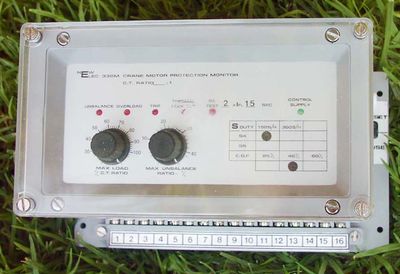
Contact Details:
NewElec (Pty) Ltd
298 Soutter Street cnr Maltzan Street
Pretoria West
Pretoria
0058
South Africa
Tel: +27 (0)12 327 1729
Alt. Tel: 0860 103 041
Fax: +27 (0)12 327 1733
Send Enquiry | Company Information

PROTECTION RELAY FOR WINCHES AND OVERHEAD CRANES
Product News Thursday, April 18, 2013: NewElec (Pty) Ltd
Designed specifically to protect wound rotor motors on winches or overhead cranes, NewElec's 330 Series motor protection relays provide accurate, full load protection and adjustment. Wound rotor motors used in such applications are designed for specific duty classes, starting class, cyclic duration factors, as well as power and load current values. These are usually well displayed on the motor’s nameplate. NewElec's 330M crane motor protection relay is uniquely designed for each motor, providing overload, phase loss and phase unbalance protection.
Accurate repeatable protection on small or marginal loads is maintained with a user-selectable maximum load threshold, adjustable from 30 to 100% of the CT primary current.
Unbalance and phase loss protection utilise a user-selectable detection threshold on a continuous linear scale between 2 to 40% of the maximum motor load current value. The 330 Series calculates true RMS load patterns as well as heating and cooling rates, which ensure that motor loading and CDF are maintained within the tolerable thermal envelope of the motor. LEDs indicate overload threshold and trip, unbalance detection threshold and trip, separate trip indication and the thermal lockout period.
The 330 Series relays are available for either chassis or flush door mounting. An additional feature and benefit is the optional thermal trip state indicator that can be mounted as far as a kilometer away from the protection relay.
When the 330 Series relay is placed in the crane operator’s cabin, he will see a visual display of the operational state of his crane motor in terms of workload. He will be able to decide whether or not he can work the crane harder or whether he needs to reduce speed.
